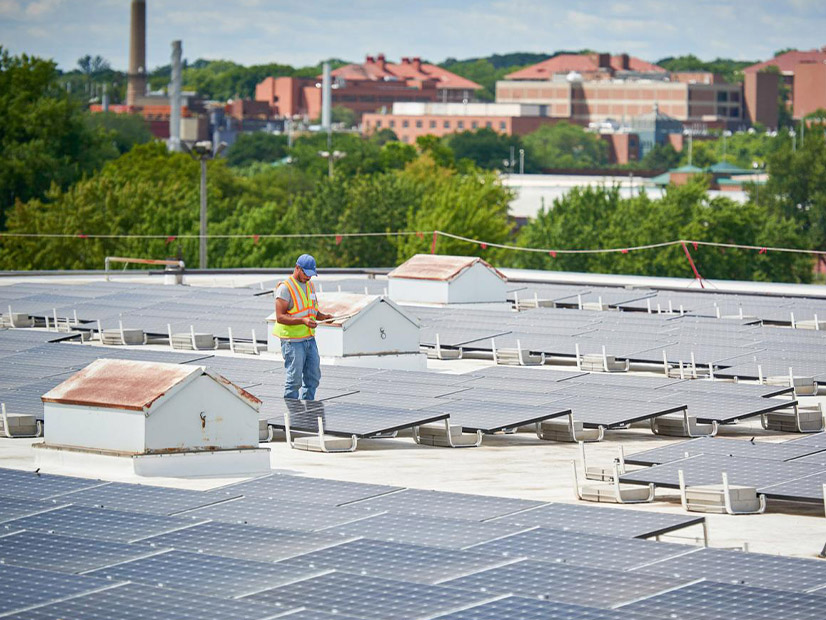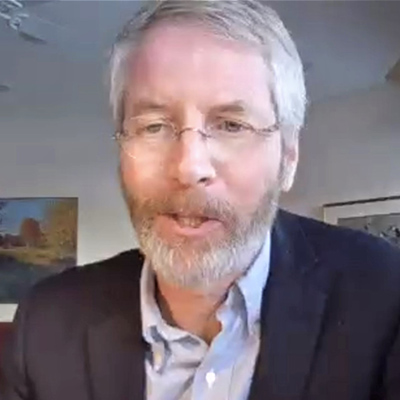Xcel Energy is free to continue to apply a blanket 80% limit on its distribution system — limiting the amounts of community solar that can interconnect — after the Minnesota Public Utilities Commission’s decision last week.
Minnesota regulators voted 4-0 at a Dec. 14 meeting against opening an investigation into Xcel Energy’s controversial policy of limiting the total capacity of the utility’s entire distribution system to 80% of its rated capacity (C-23-424). Xcel’s rule has been in place since March 2022.
The utility has said the restriction is essential because a daunting number of community solar gardens is inundating its system and worsening congestion. It said it created the planning limit to reserve some hosting capacity on the lines as a safeguard. Minnesota’s community solar program lets ratepayers sign up for a portion of output from developers’ small solar farms. Xcel issues a bill credit for subscribers’ share of energy that flows back onto the grid. Currently, Xcel has more than 860 MW of community solar gardens on its distribution system.
The Minnesota Solar Energy Industries Association (MnSEIA) and a group of more than 20 developers, clean energy organizations and individuals filed a complaint against Xcel’s practice in September. They argued that Xcel broke the law in sequestering a portion of its capacity and that 20% is too much cushion and unnecessary for the sake of reliability.
MnSEIA said the PUC’s dismissal of its complaint amounts to regulators allowing Xcel to continue “arbitrarily limiting capacity of its distribution system.”
During the hearing, MnSEIA Director of Policy and Regulatory Affairs Curtis Zaun argued state law prohibits Xcel from implementing sweeping interconnection rules without explicit PUC approval.
“Xcel is effectively unregulated when it comes to interconnection practices,” he said, adding that Xcel doesn’t have a detailed analysis to back up its decision to shelf grid capacity.
Zaun said the matter was about more than Xcel’s distribution limits. He said it strikes at the commission’s “authority, ability and responsibility to regulate utilities and thus its role in Minnesota’s clean energy future.”
Zaun said the 20% capacity that Xcel proposes to reserve on its system is equal to 2.6 GW of generation and essentially wastes ratepayers’ money.
Misgivings from Schuerger
Minnesota Commissioner Matthew Schuerger said he had reservations with Xcel’s program as it stands today. He said he didn’t agree with the limit if it amounts to Xcel setting aside a chunk of the distribution system only to “warehouse” it.
He said when the commission didn’t stop Xcel from moving ahead with the grid management program in January 2022, it did so only because there wasn’t sufficient information in the record for the commission to approve or reject it. At the time, the Minnesota PUC opted to leave the capacity program to the utility’s engineering judgment.
Schuerger said his understanding of equipment ratings is “they aren’t actually hard-edge limits.”
“I think the details really matter in how we look at equipment ratings. On the bulk power system, we’re looking at dynamic ratings on equipment. The best practices and the research is moving towards the idea of dynamic ratings on distribution systems as well,” he said. “I’m struggling a little bit with this idea … that your equipment ratings should be some static, hard limit for all of time going forward.”
Xcel Energy DER Integration Manager Dean Schiro said there’s a difference in ratings on the distribution system and the more flexible ratings of the transmission system. He said Xcel is trying to be conservative in the planning realm — rather than in operations — realizing that the utility doesn’t know what’s going to connect to the distribution system upwards of five years into the future.
Schuerger pointed out that Xcel’s own load growth forecast “seems 180 degrees out of sync” with its proposal to limit capacity on the distribution system. Xcel predicts its 8.5-GW peak aggregate load will become 20.5 GW by 2052.
Schuerger also said the program seems like a “large safety margin” and out of step with Xcel’s efforts to have more visibility into and operational controls on its distribution system.
Schiro said Xcel doesn’t yet have flexible resources on the distribution system. He reminded regulators that resources wishing to interconnect to the distribution system are still firm and non-dispatchable.
Xcel Energy Assistant General Counsel Jim Denniston said MnSEIA’s allegation that Xcel flouted the commission’s earlier order by moving ahead with the 80% threshold is “serious” and “troubling.”
Xcel maintains it needs a distribution capacity limit to preserve reliability and keep load and generation in balance.
“No utility should be forced to run its system to the very brink,” Xcel told the PUC in response to the complaint.
Minn. Department of Commerce Recommends Investigation
The Minnesota Department of Commerce recommended the PUC open an investigation into Xcel’s practice to flesh out the record and allow experts to weigh in on the engineering logic behind the decision.
Commerce attorney Sara Payne said an investigation would be important in helping establish whether the utility’s program is in the public interest and to what degree the commission has oversight of a utility’s engineering decisions.
“I think the hope would be that an investigation could help provide enough information that the commission could provide guidance on where that line is from a legal threshold,” Payne said. She added that at a minimum, the PUC could at least get some “visibility into the issue from the engineers.”
Payne said requiring some clarity and transparency now would be helpful for the PUC to address dockets down the road as DER continues to grow.
Prior to the hearing, the Minnesota Attorney General’s Office also told regulators they should investigate Xcel’s planning limit.
Schuerger said he was hesitant to open an investigation that would “chisel” the 80% or another figure in stone considering the grid modernization efforts on the horizon.
“If that 80% buffer doesn’t get reduced over time, something is seriously wrong in my view. It better move over time,” Schuerger said.
MnSEIA Executive Director Logan O’Grady said the limit hinders Minnesota’s progress towards 100% carbon-free energy.
“This decision goes beyond that concern alone; it raises deeper concerns that Minnesota’s regulated utilities are free to act without clear authorization from regulators and with little regard for the wishes of Minnesotans who are seeking cleaner energy options, but whose choices have been blocked by the policy decisions of powerful, self-interested monopoly utilities,” O’Grady said in a press release following the decision.
Even though regulators declined to investigate Xcel’s rating policy, they required the utility to reach out to and hold meetings with stakeholders to explain the rationale behind the 80% threshold.
The commission will release a final order on the complaint in the coming months.




